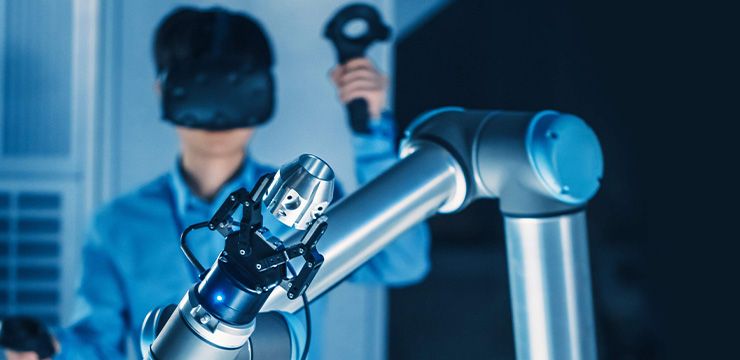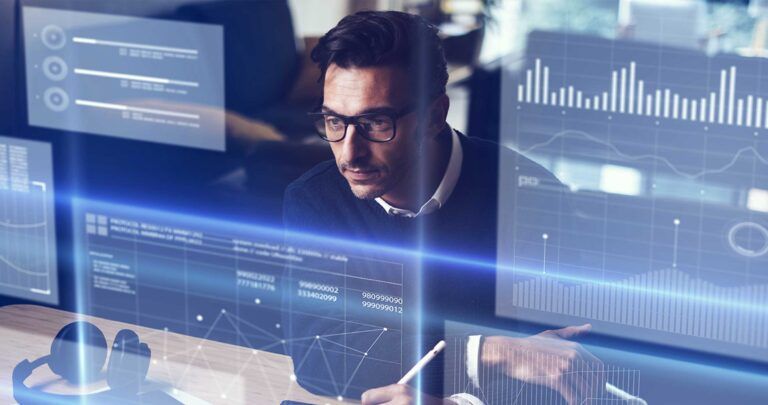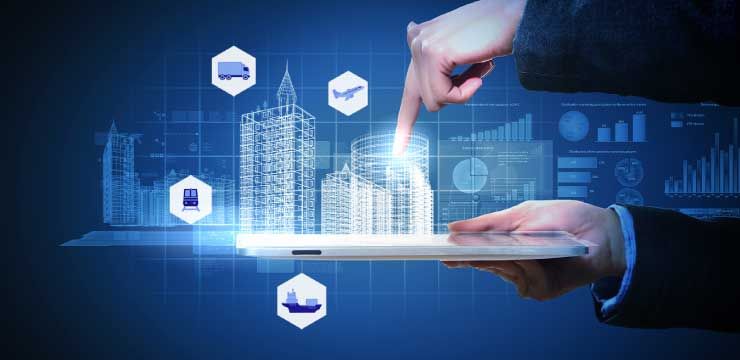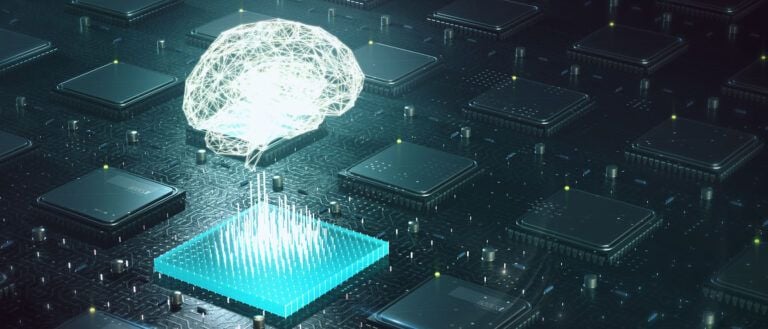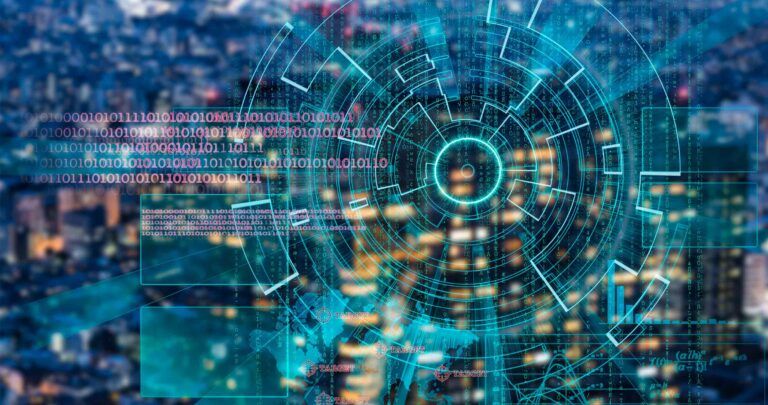How Digital Twin Solutions Affect Business: The Next Digital Transformation

What is a digital twin and why is it taking the business world by storm? In the past decade, data has radically digitalized business practices, making sizable progress toward building a connected world! Newer technologies also demand modern tools to operate them. A 2021 Accenture report found that by 2020, 65 per cent of automotive manufacturers switched to virtual reflections of real-life entities, namely digital twins, to operate products and assets. This is a significant shift in the very way the world makes sense of data. Digital twinning is the seminal technological leap that will define the next generation of digital transformation in industries. A key to strategic technological initiatives, the digital twin is a sneak peek into what awaits organizations in the enterprise metaverse.
What is a Digital Twin?
A digital twin is a dynamic, virtual replica of a physical asset, system, or environment. It perfectly emulates real-life scenarios to predict performance outcomes, technical faultlines, and potential improvements within a system. These virtual copies can range from a 3D model configurator of a turbine to a deep simulation of an entire city – powered by the emerging technologies of augmented reality, spatial analytics, Artificial Intelligence (AI), Machine Learning (ML), and the Internet of Things (IoT). Digital twins run multiple simulations of varying complexities and document the impact of endless variables such as alternate usage scenarios or environmental conditions.
Types of Digital Twins
Although connected to each other, there are four primary types of digital twins differing in complexity.
1. Component Twins
They refer to the minutest virtual counterparts of every individual component within a system. Such selective virtual pieces help engineers to understand the integral characteristics of each machinery component by subjecting them to dynamic high-range simulations.
2. Asset Twins
When more than one twin-component works together virtually, the set is called asset twins or product twins. Asset twins are typically used to focus the investigation on specific parts of a system to map their synchronous performance and identify potential parts failure.
3. System Twins
Also known as unit twins, they are used to observe how multiple assets sit together as fully-functioning parts of a broader system. They help simulate production chains and allow deep insights into performance enhancement.
4. Process Twins
Process twins handle the greatest level of complexity in a simulated environment. They intricately virtualize all systems working together, digitally reproducing the interaction of all components within a system, such as a manufacturing plant.
ALSO READ: What is Digital Transformation and Why Does it Matter?
What are Some Real-Life Applications of Digital Twin?
Understanding what is a digital twin also means discovering its varied uses in different sectors:
Maintenance of Power Generation Equipment
Digital twins help establish maintenance time-frames for large engines such as power-generating turbines, and jet engines.
Architecture and Design of Large Buildings
Applications of 3D technology help build virtual blueprints of enormous structures of high magnitude such as off-shore drilling platforms, and maintenance systems, like power, that operate within those structures.
Manufacturing Operations
Data twinning spans the production chain and virtually guides the different stages of manufacturing products, suggesting more optimal business practices.
Healthcare
Deep simulation and analyses of the health reports of individuals can accurately generate key insights, enabling future recommendations for leading quality lives.
Benefits of a Digital Twin
What is a digital twin in terms of future opportunities? Digital twin technology has many applications across industries, especially in the streams of service, engineering, and manufacturing.
- Improved performance and operational efficiency: Performance optimization of plants, facilities, or equipment and enhancement of supply chain agility
- Saving resources and company expenses: In recent years, MNCs have deployed digital twin technology and saved millions in maintenance costs. Predictive analytics also refines product defects
- Remote monitoring and collaboration: Digital twinning enables the remote monitoring of central aspects of business in its 3D counterpart, enhancing productivity and collaboration
- Increased customer satisfaction: User satisfaction is greatly improved through systematic research and development of products and services
ALSO READ: Top 5 Digital Transformation Trends of 2022
Why Do We Need a Digital Twin?
The 2020 Pulse of the Report study suggests that inferior project management services cost companies up to 11.4 per cent of their resources. Another LinkedIn report mentions that out of 50,000 projects, about 70 per cent failed to meet the criteria of budget, satisfactory results, and completion time. Digital twin technologies solve these volatile setups with virtual replicas of all what-if scenarios and simultaneously visualize favorable outcomes based on past and present behavioral trends. This eliminates the need for physical prototypes, minimizing product development time.
How Do Digital Twins Evolve?
It is difficult to answer ‘what is digital twinning’, without understanding how they evolve. Every digital twin simulation evolves to better understand the system it is working on. With constant context-specific feedback and advanced machine-learning techniques, the simulation model can map all the behavioral characteristics of a system while continually evolving with new data. The evolution of digital twins is built into the very system of its design.
How Do You Create a Digital Twin?
The three core components of a digital twin are:
- A physical representation of the asset in reality
- A graphical representation of the asset
- The substructure of data gathered from spatial and information analysis
3 Basic Stages of Digital Twin Creation
1. Design
To completely virtualize a physical asset, requires three elements:
- The device that effectively integrates the physical asset with the other enterprise systems provides transactional and operational information
- A 3D modeling software
- Identity-driven IoT device management
2. Operation
Once the design is functional and secure, it’s time to ask some important questions and fix its operational goals.
- What is the function of the digital twin apart from monitoring your assets?
- Do you feel your industry demands the functionality of remote asset control?
- Would you incorporate predictive analytics into your digital twin technology?
- What other product and/or performance development simulations would you like to delve into?
3. Augmentation
A virtual twin thrives on continuous learning, gradually expanding in operations. This is done by starting with basic twin units and eventually layering up functionality with more complex asset twins or system twins. The digital twin platforms will then progressively catch up with the physical asset.
ALSO READ: Influencer Marketing Is Taking Advantage of The Metaverse! Are You Ready?
The Future of Digital Twins
A recent global forecast by Markets & Markets report claims the digital twin market will grow from $6.9 billion in 2022 to $73.5 billion by 2027 at a CAGR of 60.6 per cent. Gartner’s 2017 prediction of about 50 per cent of the major industrial companies using digital twins by 2021 falls in line with these stats and it only means the effectiveness and adoption of the novel technology will grow with time.
The next evolutionary stage of the internet will have digital counterparts of everything in the physical world. The connectedness of systems unlocks new opportunities that demand professionals with high data literacy skills. As industries scramble for multifaceted talent, the technology courses of Emeritus will help you understand what is a digital twin, and arm you with the pioneering technological expertise of our times.
By Bishwadeep Mitra
Write to us at content@emeritus.org



